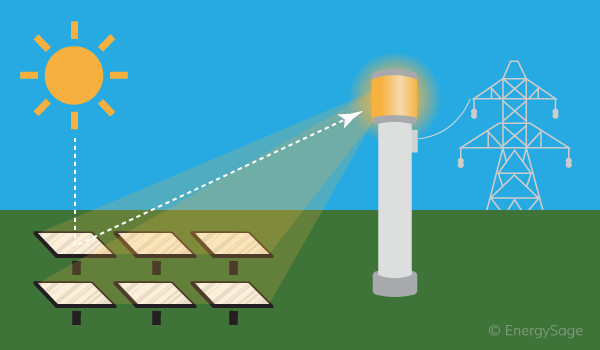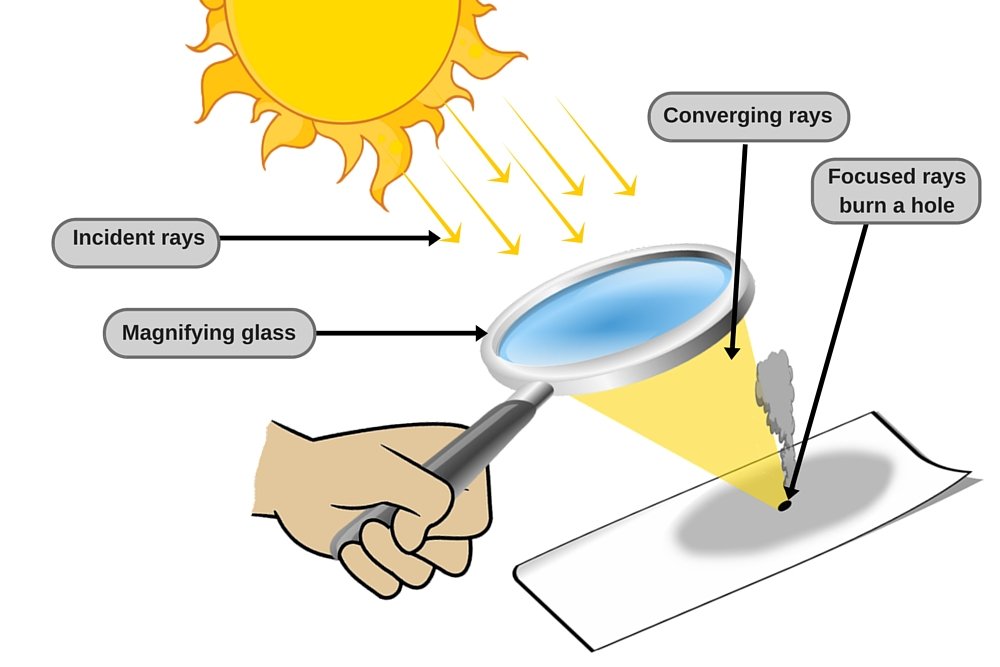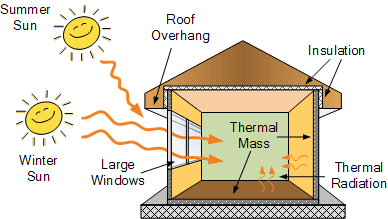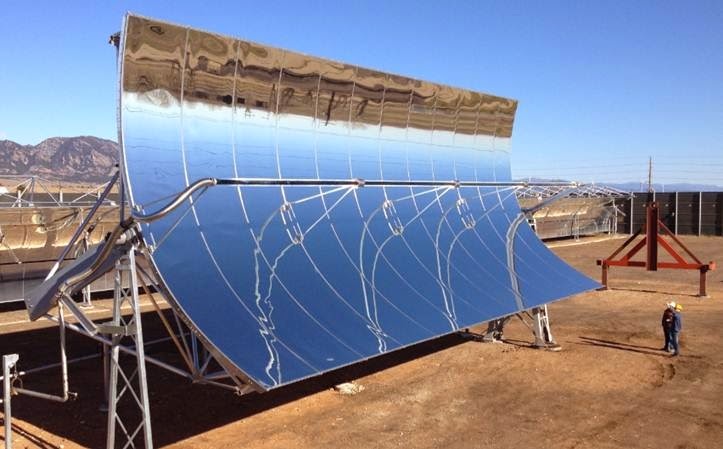
Utilization of Solar Thermal Energy
As soon as we hear the term solar, a basic picture that comes to our mind is the solar panel. In solar panels, we use light energy from the sun to produce electricity. Contrary to this, in thermal utilization we directly make use of the heat coming from the sun.
We all might have performed this small activity of holding a magnifying glass on a paper under the sun. What happens after some time? We observe that the paper starts to burn. This is because the magnifying glass concentrates the energy coming from the sun to a particular point, which increases the intensity and paper starts to burn. This is a basic example of the thermal utilization of electrical energy.
The basic principle of this method is to heat by concentrating the sunlight as much as we can with the help of solar energy. This heat can then be used either directly or can be converted into other forms of energy by suitable methods. Solar Thermal Energy has a wider range of usage than photovoltaic technology which includes heating and cooling of homes, heating water, cooking food, or generating electricity.
There are 2 ways to harness solar thermal energy:
- Passive systems: These systems do not require any special equipment for solar energy to be used. The key factors for this system are the design, placement, and material used for the built structures for the optimal usage of solar energy. For eg: A house with windows facing the sun most of the time in the daylight can keep it warm during winters.
2. Active systems: In these systems, special equipment is used to make use of solar energy. For example: To generate electricity photovoltaic system is used and for using heat directly we use mirrors or reflector (concentrated solar power-CSP).
A standard solar thermal setup is consists of collectors, supporting structure, heat transfer fluid, pumps, and piping work. There is a variety of collectors depending upon the maximum temperature to which they can raise. The details of these collectors are discussed in our next blog.
Collectors: Collectors have two main parts: reflectors (mirrors) and receiver. The reflectors are used to capture and focus the sunlight on to the receiver. The receiver contains the fluid which gets heat up due to the focussed light.
Heat Transfer Fluid: The fluid in the receiver circulates and transfers the heat either directly to the system to be heated or is used to produce steam, which can cause mechanical motion. This fluid can be water, a mixture of water and glycol, oils, molten salts, or a refrigerant. The working fluid should be of high heat capacity which either produces work by expanding in a turbine or can be used as indirect heat transfer fluids.
Pump: They are used to transfer the used heated fluids back to the source tank so that they can be heated again and the cycle continues. According to the temperature of working solar thermal energy can be categorized into three areas:
- Low-Temperature Heat Utilization
The low-temperature systems operate from above ambient to about 80oC. The main application of this system is to heat swimming pools, for domestic use (hot water and heating), etc. Flat plate solar collectors are used in this method. These collectors absorb the heat from the sunlight and transmit to the pipes attached to them containing the working fluid. As losses are high in these type of collectors with no concentration mechanism, they are not able to generate very high temperature.

- Medium Temperature Heat Utilization
This system operates between 80oC-250oC. These systems are used in industries such as power, textiles, processing of raw materials, etc. This system provides hot water or low-grade steam. Water-Glycol mixtures are used as working fluids. For reaching the temperature as mentioned above, we make use of evacuated vacuum solar collector or concentrated solar collectors. These collectors work by focusing the maximum heat to a particular point so that the temperature can be raised to a higher level.
- High-Temperature Heat Utilization
Operating above 250 oC, the method is used in industries and for electricity generation. Different types of working fluids used are water, mineral oils, molten salts, etc. In this system also, concentrated solar collectors are used with a very high heat capacity of the working fluid.
How electricity is produced using Solar Thermal Energy?
- The solar heat falling on the mirrors is focused on the receiver which contains the working fluid.
- The fluid gets heated up and starts circulating in the circuit I (Refer figure above).
- The heat is extracted by circuit II in the heat exchanger.
- The fluid in circuit II gets heated up and converts to superheated steam.
- This superheated steam goes to the turbine and produces mechanical motion.
- The turbine is coupled with the generator which ultimately produces electricity.
What is next?
As discussed earlier, PV cells only make use of the light energy without making any use of thermal energy. Similarly, the solar thermal setup only makes use of the thermal or heat energy and cannot utilize light energy. Researches have been carried out on hybrid PV Cells and Solar Thermal Collectors which can make use of both Light as well as heat energy.











Leave a Reply